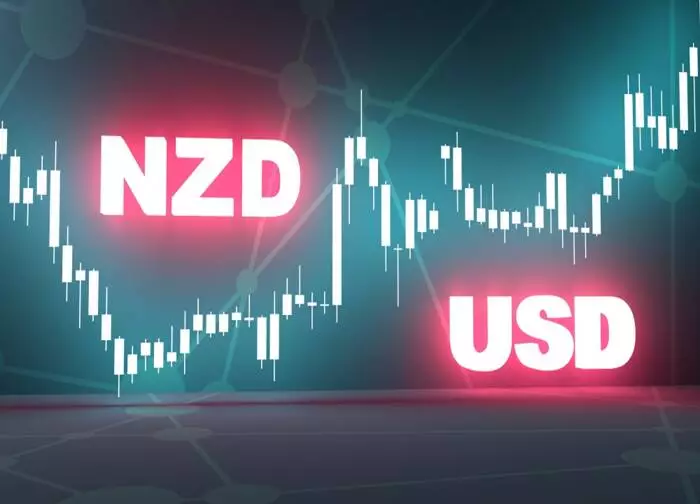As the Reserve Bank of New Zealand (RBNZ) prepares for an anticipated 50 basis point interest rate cut, immediate market reactions are expected to reflect a knee-jerk sell-off across various New Zealand dollar (NZD) pairings. The emphasis won’t solely rest on the cut itself, but rather on accompanying factors; the tone of the rate statement, comments from RBNZ officials during press conferences, and any updates to economic forecasts are critical to shaping market sentiment. Investors and analysts will be micro-analyzing the RBNZ’s communication for any signals that could guide future decisions amid a backdrop of unpredictability in the global economy.
In the technical realm, the NZD/USD currency pair finds itself delicately balanced within a crucial support zone near US$0.5511. This month has seen the price action closely flirting with this long-term support level. A noteworthy observation is the formation of a bullish engulfing candlestick pattern, hinting at potential buying pressure. However, while this may suggest a forthcoming recovery, bulls might be hesitant, remembering that a similar rebound in October 2022 failed to establish a sustainable high. This historical context presents a cloud of uncertainty, especially as the overarching trend remains inclined downward. Consequently, traders must remain vigilant; while a bullish pattern could suggest optimism, the prevailing market conditions may restrict significant upward movement.
Examining the daily chart, the NZD/USD recorded a higher high at US$0.5738 last Friday—this represents the highest valuation the pair has seen since December 2024. Intriguingly, despite this notable uptick, the price appears caught in a ‘D-leg’ of an AB=CD pattern, where the market’s trajectory is hampered by a future resistance zone. Specifically, this resistance is positioned between US$0.5774 and US$0.5804, along with a pinpoint equal projection resistance at US$0.5789. This range encapsulates a significant area of contention that traders should monitor closely, as it may determine whether the current higher high becomes a turning point or merely a temporary peak before heading south.
While the current market dynamics present opportunities for traders, there is a prevailing caution regarding the NZD’s trajectory. The mixture of strengthening technical indicators from the monthly and daily timeframes belies an underlying vulnerability shaped by a contentious economic landscape and historical performance concerns. The macros surrounding the RBNZ’s impending actions will heavily influence sentiment, but for the time being, the prevailing path of least resistance for the NZD/USD seems to lean toward further declines. Thus, traders should position themselves carefully, keeping an eye on key resistance levels that could dictate future price movements. As the landscape unfolds, those trading the NZD will need to remain agile, adaptable, and critically attentive to the nuances that define market shifts.

